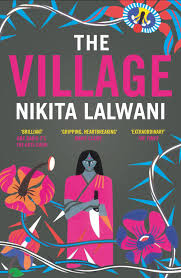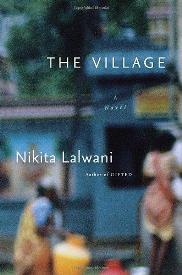Less assured than Lalwani’s first book, Gifted, but still, an intriguing meditation on identity and the ethics of documentary film
The beginning: A young British woman of Indian descent has been chosen by the BBC to film a documentary about a small village in India. The village houses about 48 families, and in each family, one member is a murderer. Ashwer is a prison without locks, a place for well-behaved convicts to live with their families and enjoy some degree of autonomy. In its years of operation, no prisoner has ever reoffended, and only one has ever attempted to escape. Ray Bhullar, along with her producer Serena and their presenter, Nathan, has come to India to tell their stories without judgment.
The end (spoilers in this section only; skip it if you don’t want to know): Wow, big emotional finish! (she said, only a bit sarcastically) At the end there’s a scene of significant emotion for some of the villagers, and Ray is there with her coworkers to capture it on film. It’s pretty blatantly manipulative of Ray’s team, and even feels manipulative to read about. Afterward, Ray gets fussed at by another of the villagers for being intrusive — which she certainly is. She gets a bad conscience and destroys all the tape they’ve taken in their time at Ashwer. I can guess that’s her career done for.
The whole: Okay, I shouldn’t have been sarcastic before. When you read the middle, the emotional outburst at the end from one of the characters is much more earned. I retract my sarcasm.
Jyoti frowned, dabbing the corner of her eye with a cloth. “But where will you spend this evening? It’s a festival day. You don’t have a family, so think of us as your family. I’ve said it a thousand times. What will you do otherwise? Go and eat bread-butter with her?” She laughed. “Dry, dry bread-butter. Who knows what these white people eat?”
Ray could feel her breathing quicken. Her hands began to shake as she raised the camera up to put the viewfinder to her eye, simultaneously pressing Record.
“She is not a white, though, didi,” said Nandini, smiling. “Anyone can see that.”
“Not a white but she lives with whites, doesn’t she, bhen-ji? When you’re around it long enough, then color sticks, doesn’t it? Tell me if I’m wrong.“
The Village has a lot to say about what you see when you look at another person, both the things you get right and the things you get wrong. Though Ray and Serena and Nathan are the ones with the cameras, they’re always aware that they themselves are being watched. Our protagonist, Ray, is particularly distressed at how she is seen by others, both her colleagues and the people of the village. She has a fragile sense of self and is easily destabilized by the judgments of others: Serena, who thinks she’s a phony; Nathan, who thinks she’s weak; the villagers, who see her as white and foreign when she wants to be seen as Indian and one of them. Everything people see in Ray is there, but it’s not the totality of her identity, just as the inmates cannot be solely defined as murderers.
The conflict that defines the book is about the vision for the documentary. Where Ray wants to be as hands-off as possible, recording slices of life in the village, Nathan and Serena are determined to mine the village for conflict, and create it if they have to. At first it seems that Ray will be the moral voice of the book, but she is too uncertain of herself to be that. Without a really clear vision of what she wants her film to be, she’s tremendously susceptible to pressure from Serena and from her boss back in London. As the book goes on, Ray gives up more and more moral ground. The importance of telling a story that will matter to the viewers and be truthful to the lived experience of the villagers gets lost in her desire to meet the commercial expectations of her colleagues.


Cover report: This one’s tough. The British cover is much more eye-catching and visually interesting, but the American cover is a suitable cover for the themes of the book, the idea of viewing the world through a blurred lens. I’m going to give it to the British cover because I think it’s the cover that would be more likely to draw my eye in a bookstore and make me pick the book up and read the synopsis on it.
affiliate links: Amazon, B&N, Book Depository